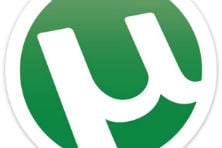TorrentFreak Email Update |
| uTorrent Speeds Up Downloads and Counters DDoS Attacks Posted: 20 Feb 2014 02:23 AM PST
The popular application began as a minimalist and no-nonsense client targeted at a BitTorrent-savvy crowd, but evolved into a feature-rich download tool during the years that followed. This week the uTorrent development team released uTorrent version 3.4. Aside from the standard bug fixes, new features and aesthetic upgrades, the latest release includes one of the most significant changes in years. Spearheaded by BitTorrent developer Arvid Norberg, the new release includes a new method of connecting people who are sharing the same file. This change is welcome, since the traditional way of choosing peers has some major drawbacks. “If [a BitTorrent client] chooses poorly, or if there are malicious actors in the swarm, the connections between clients are not well distributed through the swarm, leading to a large number of hops from node to node. That slows down the ability to each client to pass data on to the next,” BitTorrent’s Adam Kelly explains. With Canonical Peer Priority, as it’s called, peers will no longer be selected on a first come first serve basis. The new peer selection method will now give priority to peers who are close in the network (fewer hops away). This means that when uTorrent has reached the maximum number of connections for a torrent, it will still accept incoming peers with a higher priority. Instead of refusing the connection of the new peer, it will accept it and kick out a lower priority peer. This will help peers to connect to each other faster, and also reduce the distance between peers, which ultimately results in faster downloads. In addition to increased connection times and faster downloads, the new peer selection method also prevents DDoS attacks against larger swarms. With the old method malicious parties could flood a swarm with download requests, pretending to offer a piece of the file. By doing so, they could lock up dozens of connection slots, seriously degrading download performance by taking up space of legitimate peers. “There’s an opportunity to DDoS a swarm by filling up everyone’s connections slots, and continuously making incoming connections at such rate that peers won’t have an opportunity to connect to anyone else,” Norberg explained. With the new selection method this problem is solved, as low priority peers will be swapped out for newcomers who have real data to offer. uTorrent users are not expected to notice a difference right away. The effectiveness depends on how many other peers in the swarm use uTorrent 3.4, which will be relatively low for now. However, as time changes this is expected to pick up. Whether other BitTorrent clients plan to implement the same technology has yet to be seen. In addition to the new peer selection method and other improvements, the uTorrent team also announced that it will release newer versions of the software more quickly. In recent month there have been some complaints in the forums from users about a lack of updates and fixes. BitTorrent Inc. has put more developers on uTorrent, so fixes and new features are expected to come out faster in the months to come. This is expected to include a paywall to unlock premium bundles from artists. Source: TorrentFreak, for the latest info on copyright, file-sharing and VPN services. |
| “Pirate Sites Generate $227 Million In Ad Revenue a Year” Posted: 19 Feb 2014 09:11 AM PST
This week the Digital Citizens Alliance is trying to fill this gap. The group released a new report titled “Good Money Gone Bad: Digital Thieves and the Hijacking of the Online Ad Business,” which aims to offer insight into the ad dollars that end up at pirate sites. The term “pirate site” should be used loosely here, as the sample is based on all websites for which Google received more than 25 takedown requests during the third quarter of 2013. Foreign sites and sites without ads were removed from the sample, bringing the total number of sites down to 596. The report divides these sites into three sizes based on the number of unique visitors per month; large (>5 million), medium (1-5 million) and small (<1 million). They are further classified into different categories, including torrent portals, linking sites, streaming sites and direct download sites. Based on the number of ad positions, page views and estimates of the various ad-rates, the report gives an overview of the advertising income of the sites in the various segments. In total, the sites are estimated to generate $227 million in annual ad revenue. More than half of this flows to the 30 largest sites and the top torrent sites earn the most, over $6 million per site per year. "The 30 largest sites studied that are supported only by ads average $4.4 million annually, with the largest BitTorrent portal sites topping $6 million. Even small sites can make more than $100,000 a year from advertising," the report reads.
In total half of all ad-revenue goes to torrent portals, which make up less than a quarter of the total sample. Based on an estimate of the operating costs, torrent sites are also believed to be the most profitable, with profit margins up to 94.1%. It has to be noted, however, that ad revenue is often the only source of income for torrent sites, where direct download hubs and streaming sites have secondary revenue streams through subscriptions and affiliate deals. According to the report some of the world’s most respected brands are funding pirate sites. The report shows that a large percentage of the ad revenue comes from premium brands, including Amazon, American Express, Dell, Ford, Lego, McDonalds, Xfinity. “Premium brand ads appeared on nearly 30% of large sites, highlighting the ineffectiveness of current approaches to protecting the brands' reputation and value.” Most of these ads are sold and resold through various channels, so the brands themselves are not aware of these placements. However, according to Digital Citizens Alliance the association with these pirate sites can result in damage to the brand’s reputation. “Premium brands are those easily recognizable companies familiar to most consumers, and which suffer reputational damage when their ads appear on content theft site, often alongside ads for illicit sites and services,” the report explains. All in all the report provides some interesting insight into the profitability of so-called pirate sites. How accurate the estimates are is unknown, but with the top sites serving hundreds of millions of pageviews a month, the figures don’t seem unrealistic. What’s more problematic is that not all of the sites listed are “pirate sites.” Many sites have perfectly legitimate uses, and a site such as vcdq.com doesn’t host or link to infringing content at all. Digital Citizens Alliance, however, concludes that their findings should be a wake-up call for advertisers and ad-networks. They urge the various parties involved to increase their efforts to prevent ads from being displayed on questionable sites and services. “Advertisers and ad agencies, networks and exchanges can start by enhancing their voluntary best practice standards. The technology and services to identify and filter out content theft sites are available and should be adopted in the online advertising community,” the report reads. “Just as brands do not advertise on porn or hate sites, they can take steps to assure they are not on content theft sites,” it concludes. Source: TorrentFreak, for the latest info on copyright, file-sharing and VPN services. |
| You are subscribed to email updates from TorrentFreak To stop receiving these emails, you may unsubscribe now. | Email delivery powered by Google |
| Google Inc., 20 West Kinzie, Chicago IL USA 60610 | |
 With well over 150 million active users a month uTorrent is by far the most used BitTorrent client.
With well over 150 million active users a month uTorrent is by far the most used BitTorrent client.
 The table on the right shows a breakdown of the aggregate quarterly revenue per site category and site size.
The table on the right shows a breakdown of the aggregate quarterly revenue per site category and site size.